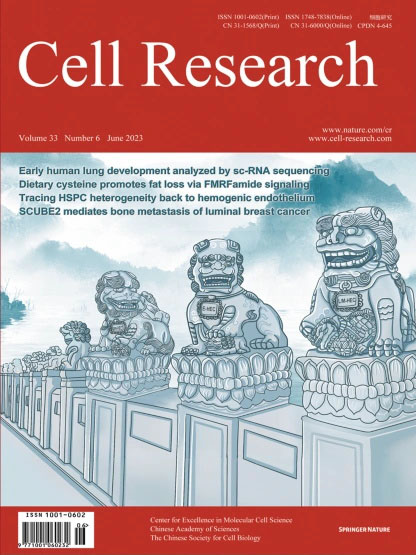
Advanced Search
Submit Manuscript
Advanced Search
Submit Manuscript
Volume 33, No 6, Jun 2023
ISSN: 1001-0602
EISSN: 1748-7838 2018
impact factor 17.848*
(Clarivate Analytics, 2019)
Volume 33 Issue 6, June 2023: 448-463
Activation of lineage competence in hemogenic endothelium precedes the formation of hematopoietic stem cell heterogeneity
Jun Xia1,2,3,† , Mengyao Liu4,† , Caiying Zhu4 , Shicheng Liu1,2,3 , Lanlan Ai4 , Dongyuan Ma1,2,3 , Ping Zhu4 , Lu Wang4,* , Feng Liu1,2,3,5,*
1State Key Laboratory of Membrane Biology, Institute of Zoology, Chinese Academy of Sciences, Beijing, ChinaHematopoietic stem and progenitor cells (HSPCs) are considered as a heterogeneous population, but precisely when, where and how HSPC heterogeneity arises remain largely unclear. Here, using a combination of single-cell multi-omics, lineage tracing and functional assays, we show that embryonic HSPCs originate from heterogeneous hemogenic endothelial cells (HECs) during zebrafish embryogenesis. Integrated single-cell transcriptome and chromatin accessibility analysis demonstrates transcriptional heterogeneity and regulatory programs that prime lymphoid/myeloid fates at the HEC level. Importantly, spi2+ HECs give rise to lymphoid/myeloid-primed HSPCs (L/M-HSPCs) and display a stress-responsive function under acute inflammation. Moreover, we uncover that Spi2 is required for the formation of L/M-HSPCs through tightly controlling the endothelial-to-hematopoietic transition program. Finally, single-cell transcriptional comparison of zebrafish and human HECs and human induced pluripotent stem cell-based hematopoietic differentiation results support the evolutionary conservation of L/M-HECs and a conserved role of SPI1 (spi2 homolog in mammals) in humans. These results unveil the lineage origin, biological function and molecular determinant of HSPC heterogeneity and lay the foundation for new strategies for induction of transplantable lineage-primed HSPCs in vitro.
https://doi.org/10.1038/s41422-023-00797-0